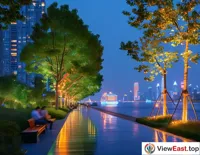

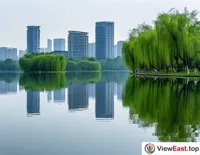
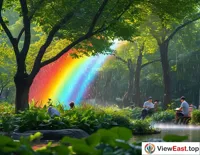


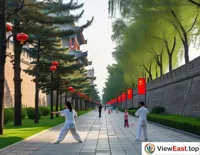
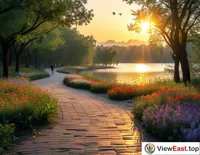
As the tide of urbanization sweeps the globe, Chinese cities, in their pursuit of economic development, also face the challenge of ecological livability. Urban greening, as an important means to improve the urban ecological environment and enhance the quality of life for residents, has become the core issue in China's exploration of eco-friendly cities. This article will follow the timeline, narrating the development of urban greening in China, showcasing the country's remarkable achievements in this field, and using vivid stories and metaphors to stimulate the interest of readers.
1. Echoes of History: The Initial Steps of Urban Greening
In the early stages of reform and opening up, urban greening in China was still in its infancy. At that time, urban greening was more of an embellishment rather than a systematic plan. However, with the rapid development of the economy, people began to realize that a city without greenery is like a body without a soul. Thus, urban greening started to be prioritized and became an indispensable part of urban planning.
2. Green Revolution: The Rapid Development of Urban Greening
Entering the 21st century, urban greening in China ushered in a period of rapid development. With the concept of "green mountains and clear waters are mountains of gold and silver" taking root in people's hearts, urban greening is no longer just about planting trees and flowers but has become an essential component of sustainable urban development. From Beijing's Olympic Forest Park to Shanghai's riverside green belt, from Shenzhen's Lianhua Mountain Park to Chengdu's Jincheng Lake, urban greening projects have emerged like mushrooms, becoming new calling cards for cities.
3. Ecological Wisdom: The Integration of Technology and Greening
The advancement of technology has brought new possibilities to urban greening. The application of intelligent irrigation systems, ecological roofs, and vertical greening has made urban greening more efficient and environmentally friendly. In Hangzhou, the Internet of Things technology has enabled precise management of urban greening; in Chongqing, three-dimensional greening has clothed the city's slopes in green. The integration of technology and greening has made urban greening smarter and more ecological.
4. Green Living: Interaction Between Urban Greening and Residents
Urban greening is not just a decoration for cities but also a part of residents' lives. In city parks, people exercise, walk, and relax, enjoying the tranquility and comfort brought by greenery. Urban greening has become a bridge connecting people with nature and cities with ecology. In Wuhan, the East Lake Greenway has become a popular place for residents to relax; in Xi'an, the circular park under the ancient city wall harmoniously coexists with history and nature.
5. Green Future: Continuous Exploration of Urban Greening
Faced with climate change and environmental issues, the exploration of urban greening in Chinese cities has never stopped. From sponge cities to ecological cities, from green transportation to low-carbon living, the connotation of urban greening is constantly expanding. Chinese cities are building a more livable and sustainable future through greening.
Stories and Metaphors: The Vitality of Urban Greening
Imagine a city as a giant living organism, and greening as its blood vessels. Each tree, each patch of grass, each flower is a symbol of the city's vitality. They not only bring fresh air to the city but also provide solace to the residents' souls. Urban greening is like an artist, using a green brush to paint a vivid canvas on the city.